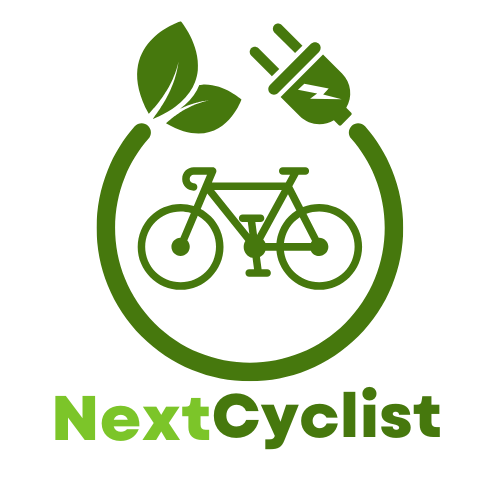48V 3000W systems can achieve speeds of approximately 58.8 km/h (36.5 mph) under optimal conditions. This speed depends on factors like vehicle type and load.
Introduction
Are you wondering how fast a 48V 3000W e-bike can really go? It’s an important question, especially if you’re eyeing one for your daily commute or weekend adventures. Speed isn’t just about thrill—it’s about safety, efficiency, and making the most of your ride. Understanding what to expect from an electric bike with this kind of power can help you choose the right model for your needs and ensure you’re riding confidently.
In this article, we’re breaking down the speed insights of a 48V 3000W e-bike. We’ll look at factors like terrain, rider weight, and battery life to give you a clearer picture of what performance looks like. Whether you’re a seasoned DIYer or just getting started with e-bikes, knowing how to gauge speed will empower you to enjoy your rides even more.
So, buckle up—by the time you finish reading, you’ll have a solid understanding of the speed capabilities of these powerful rides. Let’s get rolling!
TL;DR
- Top speeds for a 48V 3000W e-bike range from 30 to 40 mph under ideal conditions.
- Weight affects speed: heavier riders slow down, while lighter ones can reach higher speeds on flat terrain.
- Terrain matters: hills can significantly reduce maximum speed.
- Motor efficiency: A well-maintained motor boosts speed and performance.
- Tips to enhance speed:
- Check tire pressure regularly; higher pressure lowers rolling resistance.
- Perform regular maintenance on motor and battery for optimal function.
- Reduce extra weight by removing unnecessary gear to improve speed.
Speed Capabilities of 48V 3000W E-Bikes
When you’re considering an ebike, particularly with a 48V 3000W motor, you might wonder just how fast these powerful machines can go. In general, ebikes with this configuration can achieve top speeds ranging from 30 to 40 mph under optimal conditions. That’s quite impressive for a ride that feels both efficient and exhilarating!
However, it’s important to note that several factors can affect the maximum speed you can expect. Factors such as weight and terrain play significant roles. Heavier riders or those biking uphill will likely experience a reduction in speed, while lighter riders on flat surfaces may reach the higher end of that speed range with ease.
Another key point is motor efficiency. A well-maintained and high-quality motor not only runs smoother but also optimizes power output. If you’re looking to improve your ebike’s speed capabilities, here are some practical tips:
- Check tire pressure: Keeping your tires inflated to the recommended pressure can reduce rolling resistance and enhance speed.
- Regular maintenance: Ensure your motor and battery are functioning optimally. A clean motor can boost efficiency.
- Weight management: Minimize unnecessary gear and accessories to lighten the load.
By understanding these factors, you’ll be better equipped to maximize your ebike’s speed potential reliably.
| Speed Factor | Impact on Speed |
|---|---|
| Standard Top Speed | 30 to 40 mph |
| Weight | Heavier = lower speed |
| Terrain | Hilly = lower speed |
| Motor Efficiency | Higher efficiency = higher speed |
Want to know more about taking care of your ebike? Check out our e-bike maintenance tips for practical advice on keeping your ride in top shape!
Factors That Affect E-Bike Speed
Understanding how fast a 48V 3000W ebike can go goes beyond just its motor power. Several factors play crucial roles in determining its actual speed. Here’s a breakdown of those factors and some practical tips to optimize your ride.
Rider weight can significantly influence speed outcomes.
Your weight is one of the most critical factors affecting the speed of your ebike. The heavier you are, the harder the motor has to work. This can lead to slower speeds, especially on inclines.
- To maximize speed, aim to reduce extra weight on your bike. Remove unnecessary accessories or cargo.
- If applicable, consider sharing the ride; biking with lighter passengers can also boost performance.
Tire pressure and type can affect rolling resistance.
The type of tires you choose can impact how efficiently your ebike rolls. Tires with higher pressure typically have lower rolling resistance, allowing for better speed.
- Check your tire pressure regularly; it should generally be within the manufacturer’s recommended range.
- Opt for slick tires for road use, as they provide less resistance compared to knobby tires designed for off-road terrain.
Battery health and charge level determine energy output.
The health and charge level of your battery are paramount to achieving optimal speeds. A fully charged battery delivers maximum power to the motor, allowing for faster speeds.
- Regularly inspect your battery for any signs of wear and tear.
- If your ebike seems sluggish, consider fully charging the battery before each ride. Avoid deep discharging, as it can reduce your battery’s lifespan.
By paying attention to these factors, you can easily enhance your ebike’s speed and overall riding experience. Here’s a handy comparison table:
| Factor | Impact on Speed | Tips for Improvement |
|---|---|---|
| Rider Weight | Heavier riders slow down performance | Remove excess weight |
| Tire Pressure | Low pressure increases resistance | Maintain optimal pressure |
| Battery Health | Poor condition reduces speed | Regularly check and charge properly |
Incorporating these considerations into your routine can help you get the most out of your electric bike and enjoy a faster, more efficient ride.
To sum it up, understanding how fast a 48V 3000W ebike can go helps you ride smarter and safer. You can expect impressive speeds between 30 and 40 mph, but factor in elements like rider weight, terrain, and motor efficiency. Keeping your tires inflated, maintaining your motor, and trimming down extra weight will enhance your speed potential.
But don’t stop here! Check out our maintenance tips to ensure your ebike stays in top shape, and feel free to subscribe for more DIY guidance. Every ride can be an adventure, so gear up and hit the road with confidence! Your next journey is just around the corner. Ready to roll?

